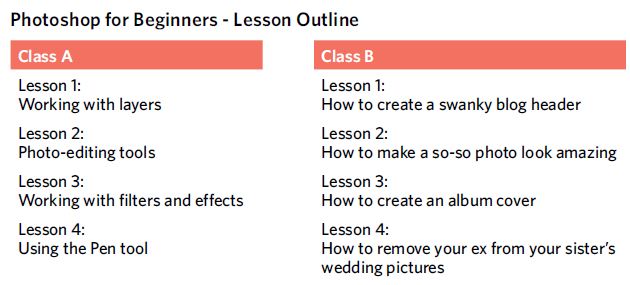This is excerpted and expanded from a post that I wrote for the Tin Can blog
We’ve talked about WIIFM (What’s in it for me?) for years – it’s one of those things you always hear that you need to include in learning experiences to persuade your learners to pay attention.
I’ve started to think that’s a really unsatisfactory view of the world – most of the people I know don’t need a sales pitch to do their jobs, or to learn something to help them do that. Instead, they need to know that the thing they are learning is actually useful and necessary.
One of my favorite studies is this one from Dan Ariely called Man’s search for meaning: The case of Legos.
The paper starts with a discussion of meaning and work:
“Most children think of their potential future occupations in terms of what they will be (firemen, doctors, etc.), not merely what they will do for a living. Many adults also think of their job as an integral part of their identity. At least in the United States, “What do you do?” has become as common a component of an introduction as the anachronistic “How do you do?” once was, yet identity, pride, and meaning are all left out from standard models of labor supply.”
The paper goes on to explain “we view labor as meaningful to the extent that (a) it is recognized and/or (b) has some point or purpose.”
They did two actual experiments — one where they had participants do a word problem exercise, and a second where participants were constructing figures with legos.
All the participants were paid money for their efforts, but some of the participants had their papers shredded as soon as they were done (without anyone even looking at the page), or their lego figures immediately broken back up in front of them (I particularly love that they labeled this last instance as the “Sisyphean” condition).
You can read the details here, but essential, people worked significantly longer or for less money in the condition where their work wasn’t meaningless. That shouldn’t be the case if people where primarily motivated by what they could get out of the situation (i.e. $$$). Dan Pink talks about several similar studies in his book Drive, when he talks about the importance of autonomy, mastery and purpose.
So, my issue with WIIFM is that, while it probably doesn’t hurt to let people know about the benefits of something, it’s not really a complete answer.
How about WCIDWT?
I think we should talk about WCIDWT (What can I do with that?). If I have the knowledge or skill that you are trying to teach me, what will I be able to do that I couldn’t before?
Kathy Sierra talks about this when she compares old school marketing (“Buy this because we kick ass”) vs a focus on the user (“Buy this because we want you to kick ass”). What can *you* (the end-user) do to be more awesome, to know more and to do more.
I’ve been playing around with the idea of accomplishment-based learning — using accomplishments as the fundamental organization of content and learning experiences, so that the very structure of the course is about learners accomplishing thing (*real* accomplishments – not finish-the-lesson or pass-the-test accomplishments). For example which photoshop course would you rather take?
So, my issue with WIIFM is that it feels transactional — I’m trying to *buy* your attention by waving shiny things, when instead it should be about your goals, and what you can do. WIIFM also feels disrespectful of learners for those same reasons.
Thoughts? Opinions? Examples? Violent disagreement? Would love to hear about it in the comments below.





I was always a big fan of achievement-based learning (along with learning by doing.) My goals with the Training from the Source series of books were that users should finish a lesson and have something to show for it, having actually created something. There were two problems with that method, though. The first was what people looked for when they picked up a book. Often, they were looking for a solution to a problem, so they didn’t want “create a snazzy gizmo,” they wanted to know how to use the lasso tool more effectively. Figuring out how to index well so that readers can find the information they’re looking for becomes critical. If you use the lasso tool 100 times over the course of your projects, a search on lasso isn’t nearly as helpful as a single index entry that points you to where you’ll learn to use the lasso. The second was defining the projects so that you weren’t effectively trying to teach everything at once, and that was the much harder problem. Especially with complex tools, mastering the basics may not provide any user satisfaction at all, but if you don’t walk the user through the basics, they’ll be lost and confused and frustrated later. I still think it’s the best approach, though!
Hey Wendy!
First – nice to hear from you! Hope things are going well 🙂
Second – yes, I think that’s a fair reservation about the accomplishment-based idea – if I’m trying to look up something specific, I don’t want the whole “create a snazzy gizmo” approach either.
I think that’s about knowing how things are going to be used. Is it going to be a reference? Is it going to be an introduction to a concept or idea? Is it a process or procedure?
I’ve been railing against one-size-fits-all-solutions elsewhere, so thanks for the reminder that I really really need to qualify the idea of accomplishment-based learning when I talk about it. Thanks for the timely reminder 🙂
+1, Wendy…. Right now, I have a preference for the first list over the second. I don’t happen to want to do the Stuff that Most People Want To Do. I want to make an interactive math lesson that acts like a game, not a shopping cart, not a game, not a math lesson… so it behooves me to figure out what skills I need by their names (layers and what have you).
Now, I’m also frustrated by “this is what layers are about” pages that don’t have the “about” in a context for getting something done. I’m new enough so that I am probably missing some critical piece of syntax (Probaby nothing… right now I can’t get an image to go from invisible to visible because I simply don’t know what to call it so that I’m not told it’s an unidentified property. So I’m distracting myself with surfing…) — I’m looking in my assorted tutorials for one that will do this…
Hey Sue – this is a really good reminder that the best accomplishments are the things the user wants to accomplish for themselves (not what we want them to accomplish).
Somewhere a while back I saw a great blog post about not needing when Gagne’s nine events when I just need to learn how to insert a document footer (or something like that).
What’s in it for me?
What can I do with it?
What can it do for me?
*Can* it do anything for me? Will it?
How will it enhance my skills/world view/?
Will it change my life? And in what direction?
What is its relevance for me/my peer groups/my profession?
Why should I want to know?
Why would I want to know?
Whatever you call it, I think we are basically talking about good old fashioned user benefit here. And I guess it does not really matter so much what the acronym is, but it matters what your approach to learning/teaching/presenting is. A bit like with the difference between target group oriented and audience friendly. Do we hit and run, or do we truly care?
Anke – thanks for the comment. It *is* old fashioned user benefit, except that I think that a focus on utility vs benefit isn’t just semantics.
For example, an assertion “It will save you lots of time when you are billing!” is different than “See how to set up two-click invoicing.”
Maybe it’s just my experience, but I see a lot of the first when it comes to how WIIFM is implemented.
Thanks!
Julie: I agree with your point. For over two decades, we have over-emphasized WIIFM as a thing to address in order to create change and increase adoption. It just perpetuates an environment, where leaders and designers have to herd cats constantly.
For new learners, indeed the question is “what can I do with it?”
For innovation teams, where people from different disciplines solve a common problem, the question then becomes, “what do I have to unlearn?”
Great post.
Rini Das
Hi,
I do not think another acronym helps.
WIIFM can INCLUDE “…it will help you do x, y, z etc…”
The problem is that people still do not articulate the “doing” stuff well enough.
Just my 2p worth
Bruce
Bruce – thanks for the comment! I’m not seriously proposing adoption of a new acronym, but I think there’s a mindset behind it, or at least how it gets implemented.
Agree that “articulate the “doing” stuff” part is the crucial bit — any examples you like of that, or ways you’d do that?
When I was in sales, “What’s in it for me?” was known as the question in all prospects’ minds – which led to the conclusion that you have to tell people about benefits, not features. That’s exactly what the Photoshop for Beginners Class A/Class B example illustrates. I believe this principle applies to many things and I don’t see anything wrong with it. But it’s only a temporary value; once people see what’s in it for them they still have to do the learning or buy the product or whatever.
The example of having one’s writing shredded without being read almost made me cry. I just left a job where I felt like that was what happened to many of my efforts. It’s incredibly demoralizing. If we don’t feel our efforts are benefiting somebody, somewhere, somehow, we eventually stop trying. Which reminds me, did Sisyphus ever give up trying to roll that rock uphill?
Me, too… I was hoping there was a thorough debriefing for the folks in the study…
I’m going to somewhat reiterate what some others have said — I don’t think you’re doing it right if you are aiming for any kind of user benefit and use descriptions/words/etc. like “edit layers.” So, new acronym or not, that never was (and should never be) grouped with WIIFM/WCIDWI/new acronym C. It certainly serves a purpose, as others have said here — sometimes I don’t WANT to have a tutorial that gets me up to speed on a particular tool, I want to know ABOUT it, I want some theory, etc. And sometimes the question you might anticipate responding to with a WCIDWI mentality will be drastically different than the question/need in my head, EVEN IF the supporting content could be identical: “How to create a swanky blog header” vs. “can layers do what I think they can do?” kind of thing.
I too am cringeing over having my writing shredded without being read. Jerks. 🙂
Love it. And I am all in for a new acronym, or word, or something different from WIIFM simply because it’s got too much legacy/baggage. I used to talk about “user benefits” but I no longer do… it’s too easy to slip back into things that could/should/would be benefits to the user, rather than things the user WILL actually use and want to use.
A user benefit of a particular programming language features for example, might be “you’ll save time”, but that in no way implies this a priority for them or that it maps to something they really DO care about (even if it’s something they don’t yet realize they want…)
So I might go even further than “what CAN I do with that” to imagining they’re saying, “what WILL I do with that.” When I change “can” to “will” I take responsibility for not just their exposure and understanding of the-thing-they-can-use, but their motivation to do so.
I want to flip the old wiifm on its head. No more hand-holding or spoon-feeding. I ask the learners to tell me why the class is going to be relevant to them, what they are hoping to take away. I found that it was an uphill battle if I did all of the justification and validation of my own work. I get a much deeper sense of achievement when my learners are engaged enough to have read the course objectives, and bring switched-on brains to the discussion
I am a huge fan of your approach! I am creating a lot of materials and training in my organization literally titled “How to…” and I went this way because I wanted to focus on learning/performing efficiently. I wanted to remove the “mental leap” folks have to make between the learning and the doing.
Also love the new acronym. When the learning is tied to job standards and what the best performers do, it can also be stated as “What SHOULD I do with this (if you want to be an exemplary performer)?”
why not do both?
e.g. “Using filters and effects to create an album cover”. Technique and benefit rolled into one objective.
I think we all get that people need to understand how learning relates to their job but I think the bigger issue is that all too often we assume we know what the benefits are for them without asking. We spend a lot of time profiling our learners and finding out what they need and how it relates to their world and once you can make that connection you don’t need to wave anything shiny at them because the benefits are obvious.
I like what you said. Not sure we need more letters, but it can’t hurt to buff out the questions involved in user centricity.
Isn’t that what it’s all about?
In the old days, subject matter experts organized courses around content, often time worn content. Today we push them to make it mean something to users. The most valuable SMEs are those who know users’ challenges and what will help them cope and thrive.
Why be driven by user centricity? Well, it’s the right focus. Better for the learner/user to readily see a future that matters, such as crafting a great photo or removing an EX from an existing one. Also, in this world, where students get to choose if they are in or out, persistent or dropped out, contributing or lurking, what they perceive as useful is the best engagement strategy of all.
Absolutely — and I’m not really advocating for a different acronym 🙂 — we have enough of those as it is.
I loved this Photoshop example when I found it in your book (and I was just making reference to it in the book I’m working on now, by coincidence.) But I can relate to Wendy and Sue’s point that sometimes you just want to look up a feature directly (especially experts in flow.) It’s possible that there’s a media difference–I expect a book to be a reference, but a class to be more hands-on and project based (that’s bound to be different for everyone.)
And I couldn’t agree more about improving on WIFM. Besides the fact that it seems to reduce learning objectives to a sales pitch, it really doesn’t capture the big motivation picture. The self-centered quality is uninspiring as well. People don’t always do everything for themselves. Thanks for the post! (and the book 🙂
What i did was to “sell” the benefit to the audience.
The true benefit
“you can get your jobs done faster” is not benefit,
you can go home faster to see your family or get drunk with your friends is benefit
“You can use that gas tester in the right way” is not benefit
You can be safe on your work and sees your children grow up is the one.
And make sure the audience gets it on the first time.
If not..well i got some blank faces on my audience..LOL
Thanks for another point of view anyway.
Luki TransWISH